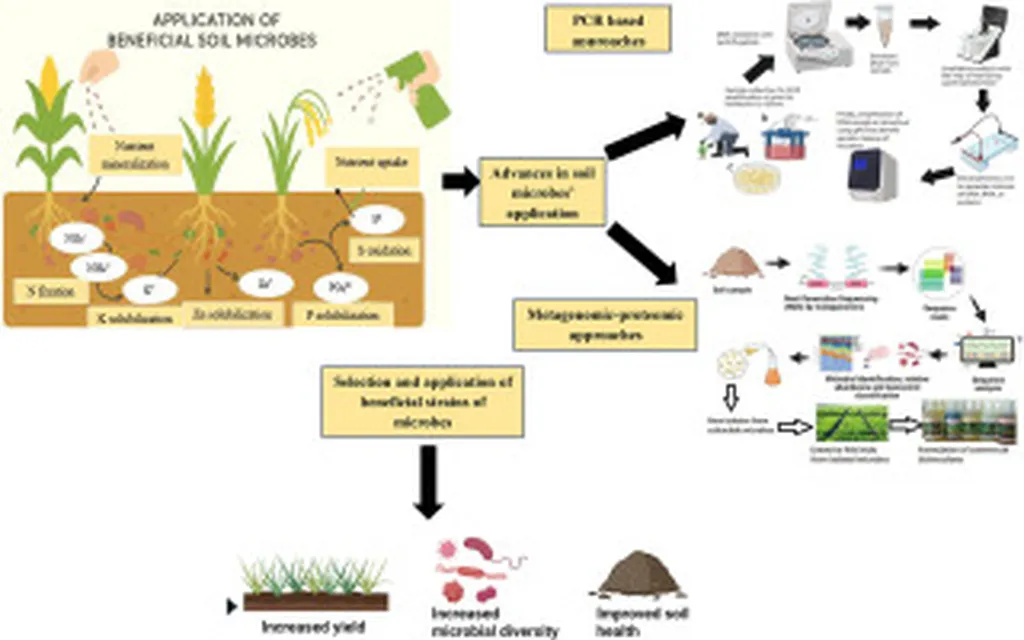In the quest for sustainable agriculture, scientists are turning to an often-overlooked ally: bacteria. A recent review published in the *Journal of Global Innovations in Agricultural Sciences* (which translates to *Journal of Global Innovations in Agricultural Sciences*) sheds light on the remarkable potential of exopolysaccharides (EPS) produced by Plant Growth-Promoting Rhizobacteria (PGPR). These sticky, gel-like substances, excreted by bacteria, are emerging as a powerful tool in enhancing crop resilience and productivity under challenging environmental conditions.
Lead author Saliha Gharbi, whose affiliation is not specified, explains that EPS serve a dual purpose. “They act as a protective shield for bacteria, helping them survive extreme temperatures, high salinity, and drought,” Gharbi notes. “But their benefits extend far beyond microbial defense. They also improve soil structure, increase water retention, and boost nutrient availability, all of which are critical for maintaining healthy crops.”
The review compiles and critically assesses current literature on EPS, focusing on their chemical composition, classification, roles, biosynthesis, and methods of characterization. It highlights how these bacterial exudates positively affect plant growth under various abiotic stresses, including high salinity, drought, temperature fluctuations, and heavy metal contamination.
One of the most compelling aspects of this research is its potential commercial impact, particularly in the energy sector. As the world shifts towards more sustainable and low-input agricultural systems, the use of EPS could offer significant environmental benefits. By enhancing soil health and crop resilience, EPS could reduce the need for chemical fertilizers and pesticides, lowering input costs for farmers and minimizing environmental pollution.
Moreover, the improved water retention and nutrient availability facilitated by EPS could lead to more efficient use of resources, a critical consideration in the face of climate change and water scarcity. “The mechanisms through which PGPR and EPS enhance plant stress tolerance underline the broader implications of EPS in promoting more resilient agricultural systems,” Gharbi states. “This could be a game-changer for farmers facing diverse environmental pressures.”
The review also emphasizes the importance of understanding the biosynthesis and characterization of EPS to fully harness their potential. As research in this field continues to evolve, it is likely that we will see the development of new agricultural practices and technologies that leverage the power of these bacterial exudates.
In the broader context, this research could shape future developments in sustainable agriculture, offering a promising avenue for enhancing crop productivity while minimizing environmental impact. As the world grapples with the challenges of climate change and resource depletion, the insights provided by Gharbi and her colleagues could pave the way for more resilient and sustainable agricultural systems.
The review, published in the *Journal of Global Innovations in Agricultural Sciences*, serves as a call to action for further research and investment in this promising field. As we strive to build a more sustainable future, the humble exopolysaccharide may well emerge as an unsung hero in the quest for agricultural resilience.

